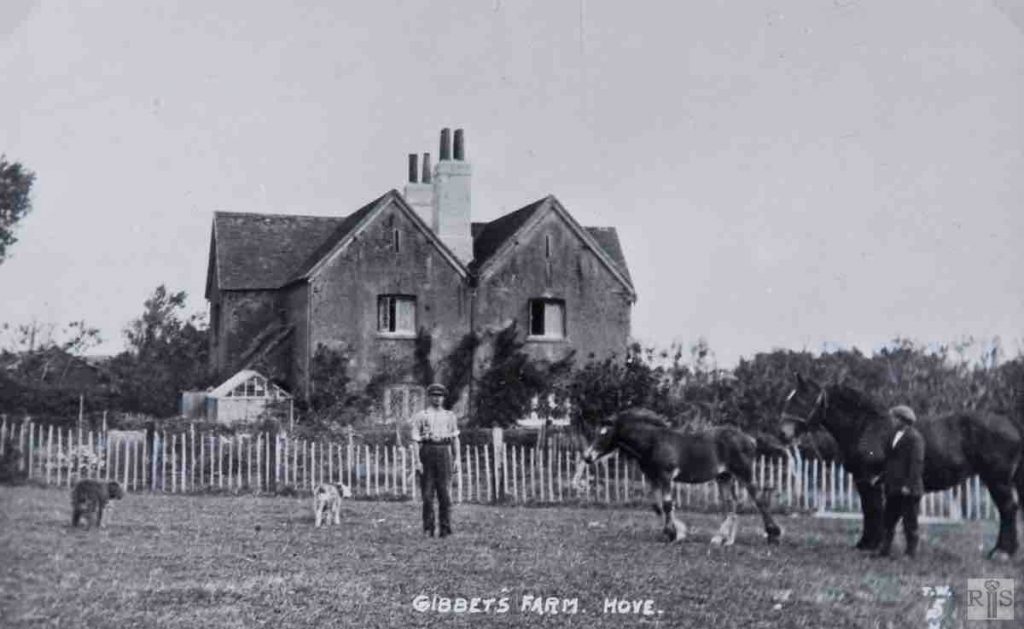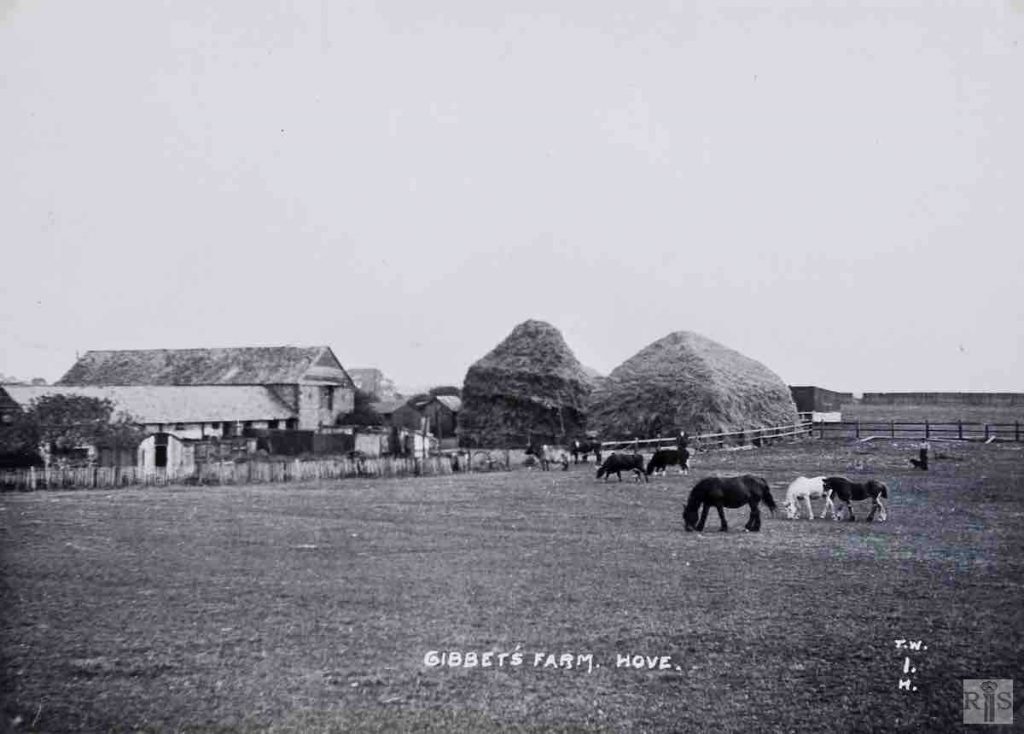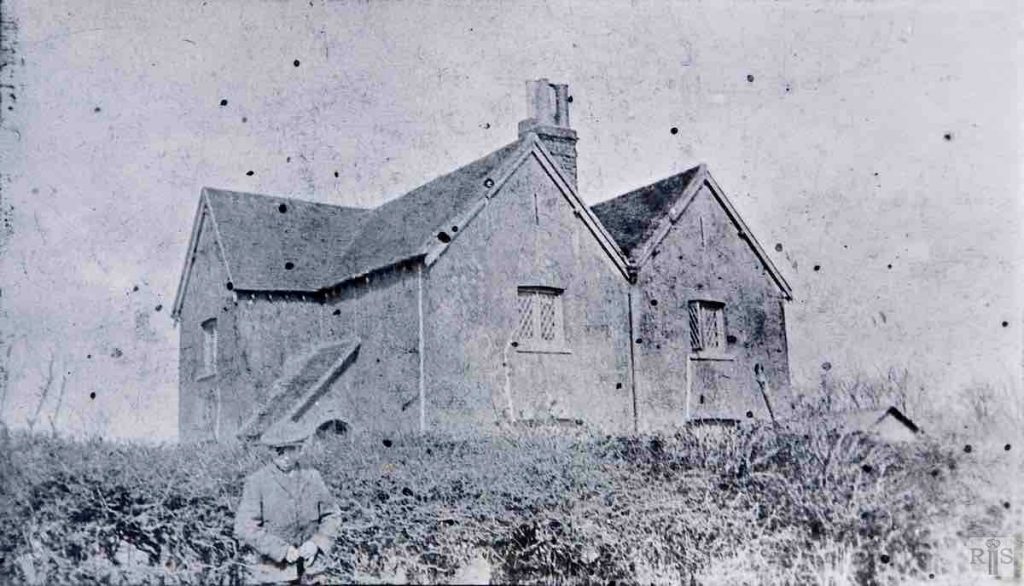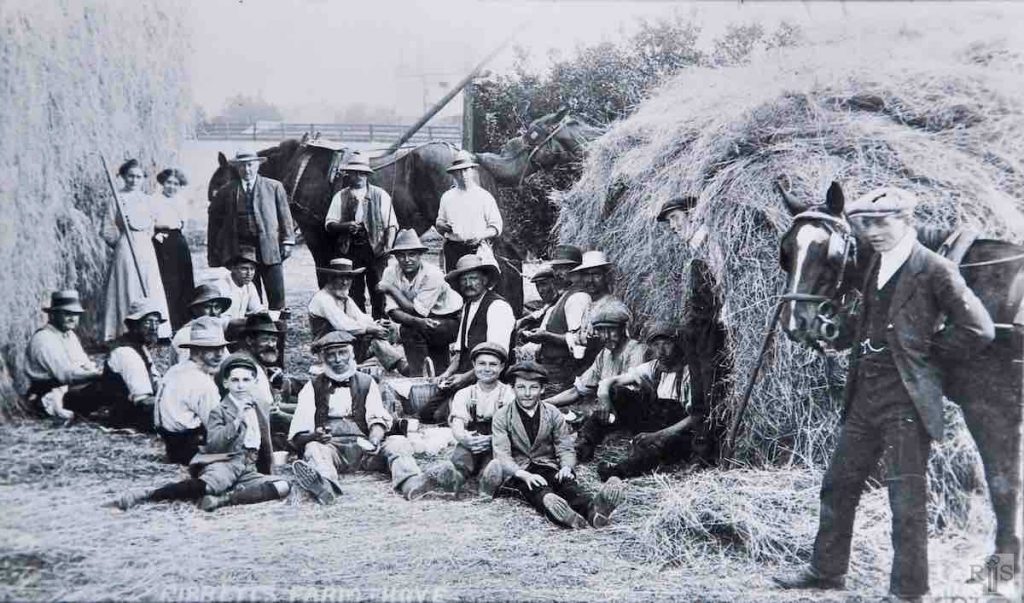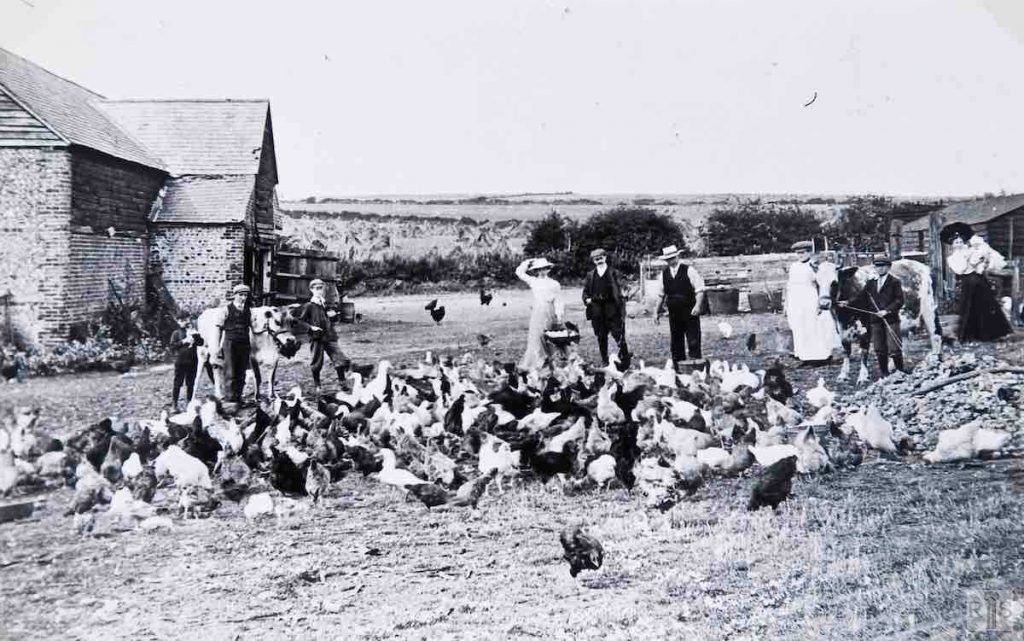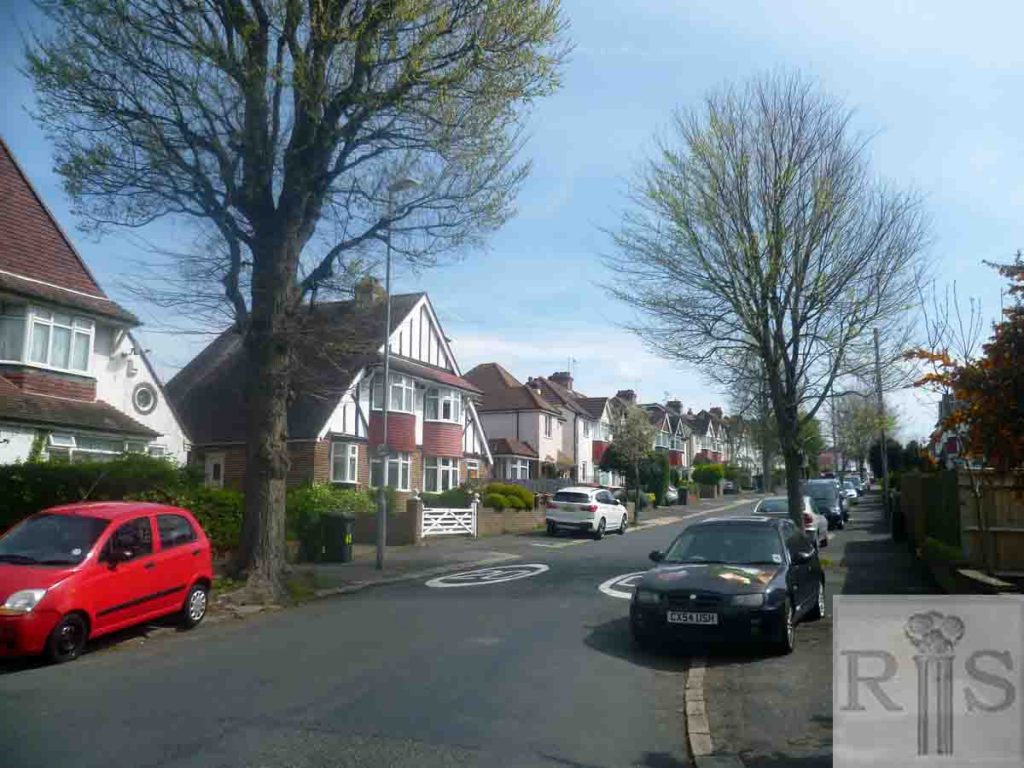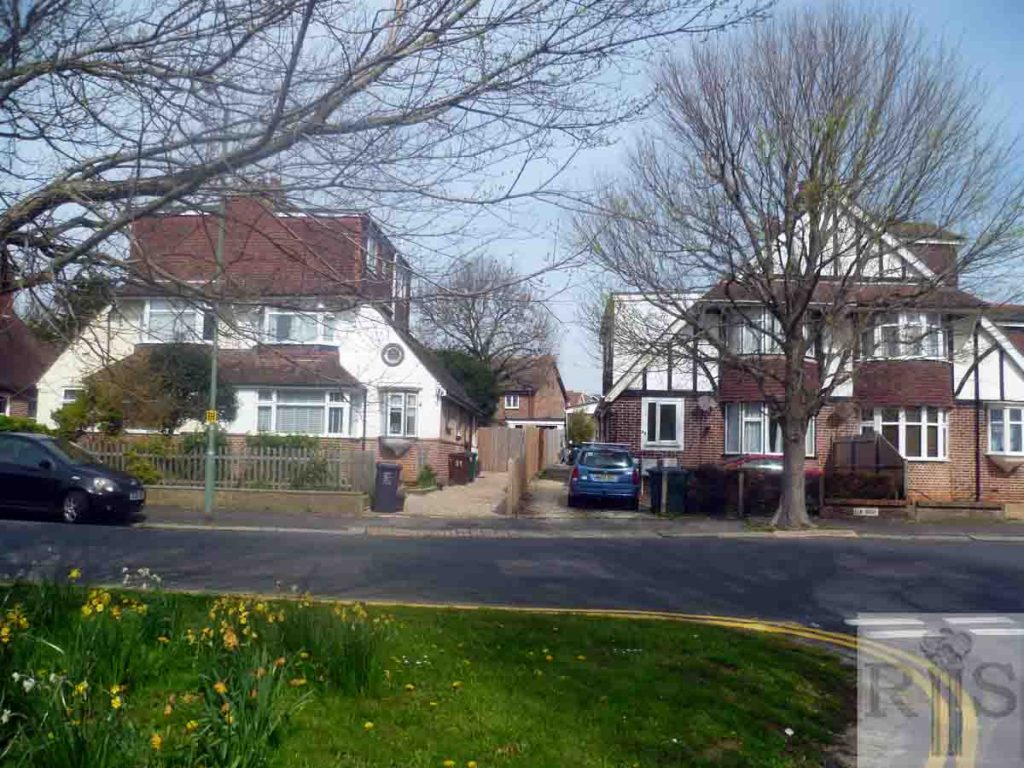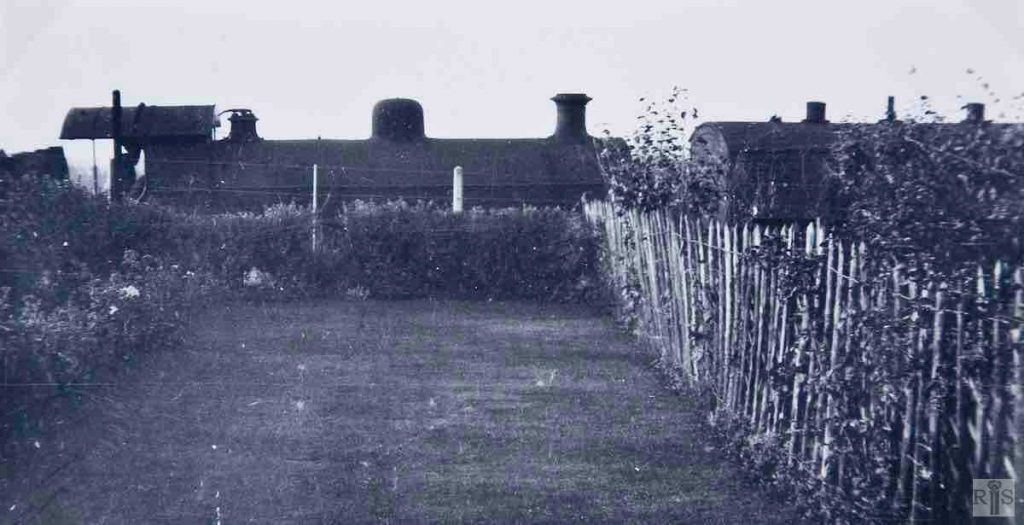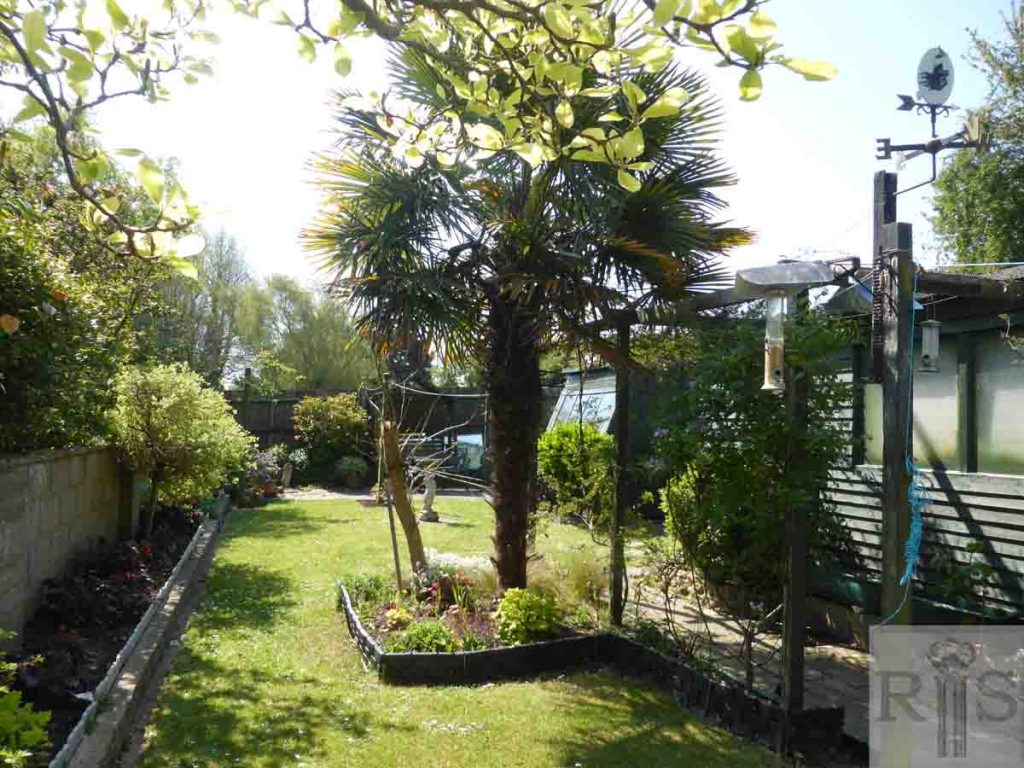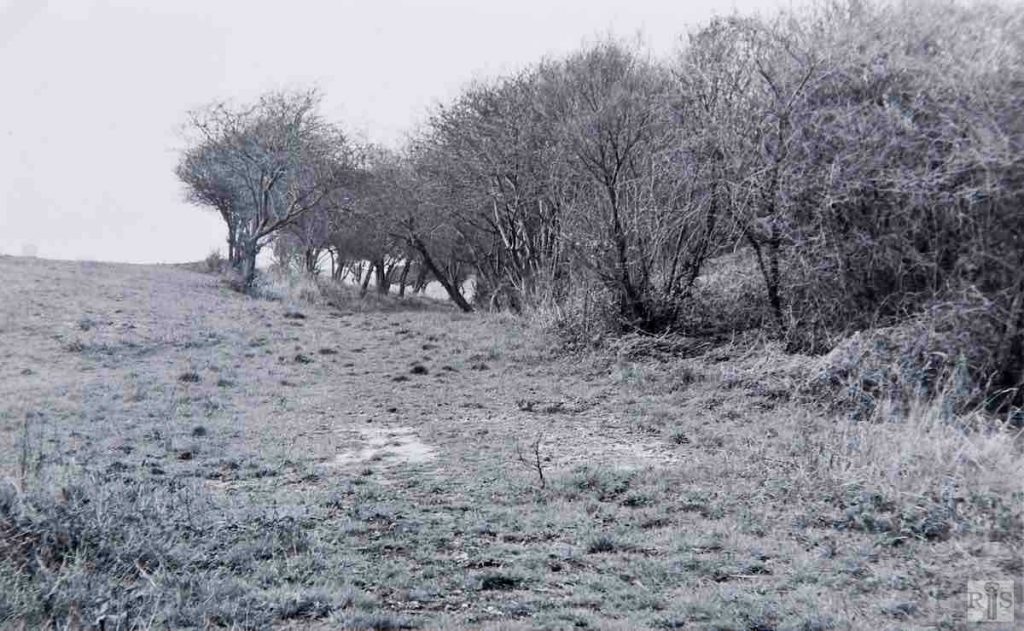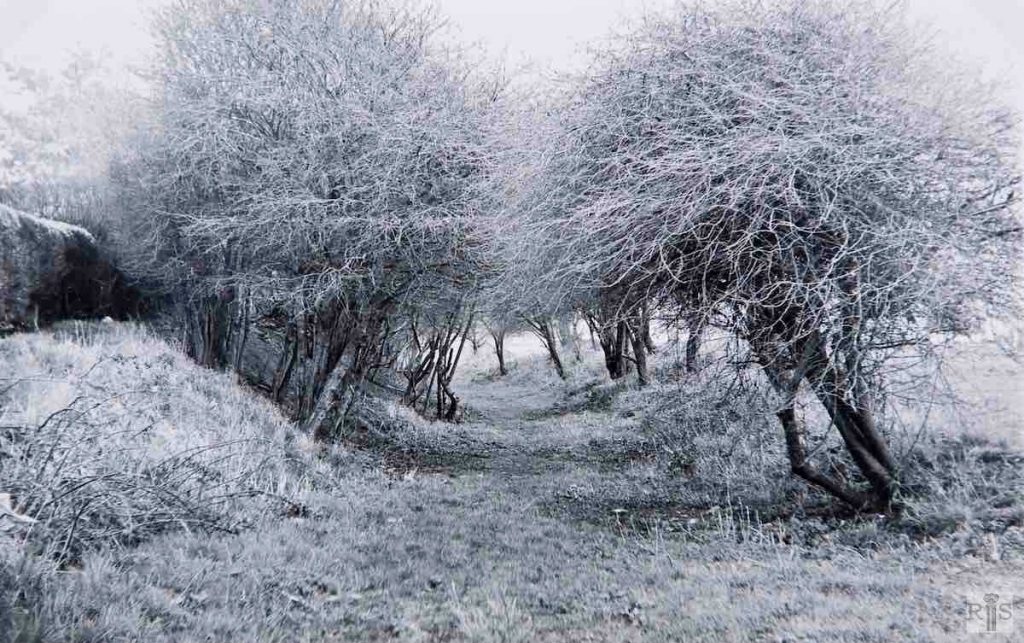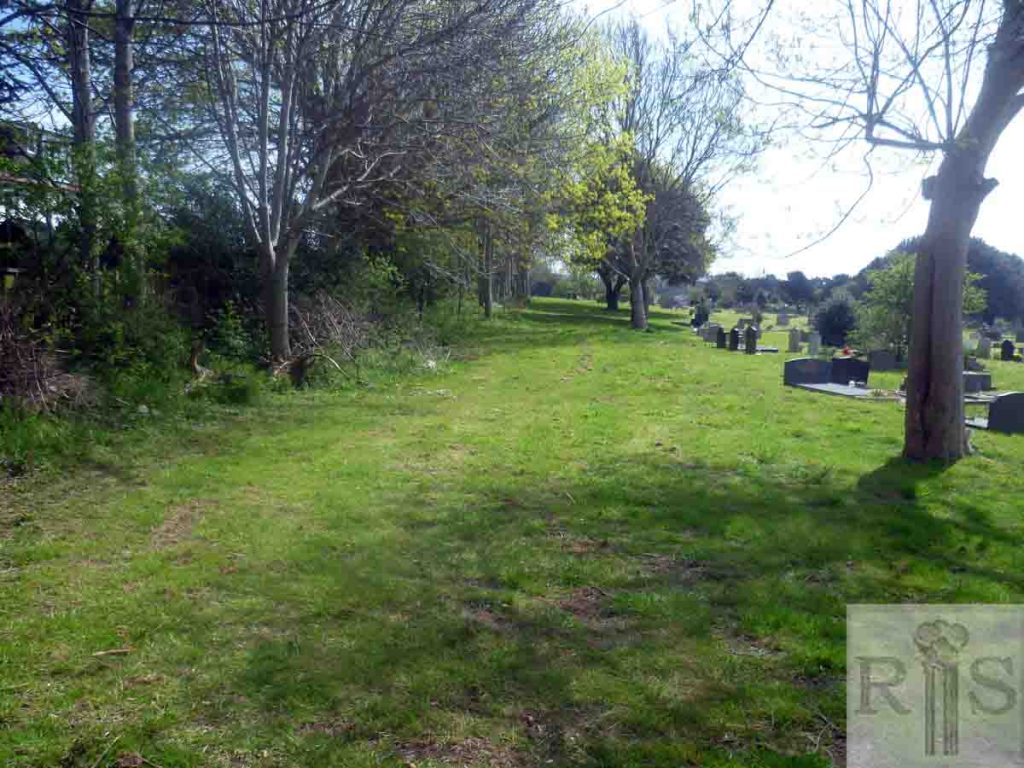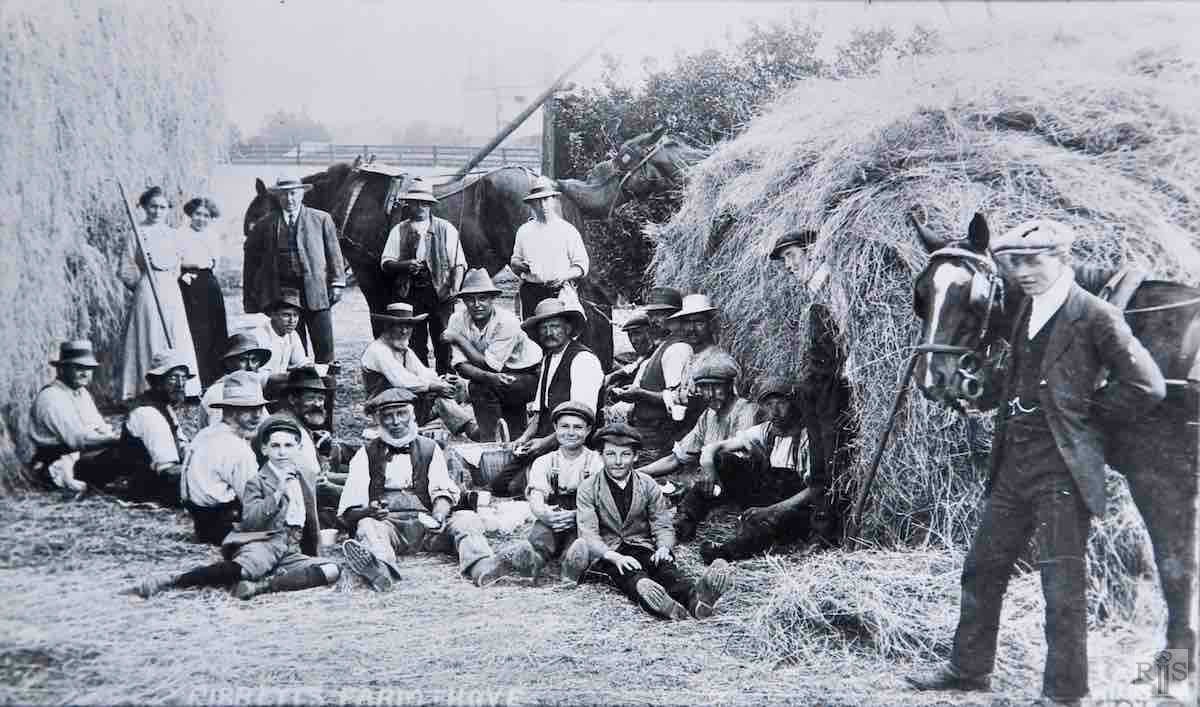
James Gray: The farmhouse [Gibbet’s Farm] in 1912. Originally two cottages occupied by workers on Hangleton Farm, Mr S Holmes, the last tenant of Gibbet’s Farm, converted it to a farmhouse. jgc_37_109
James Gray: The farm and buildings, here shown, stood on the site of Elm Drive, Hove, and derived its name from the gibbet which existed in the 18th century just north of the Old Shoreham Road approximately where the footpath goes through to Maple Gardens. The farm was established about the middle of the last century on land rented from the Sackville family.
James Gray: The site of the old farmhouse. The land was sold for building in 1930 and in the following year the building of Elm Drive commenced. The houses shown here are numbers 47 to 53 Elm Drive. jgc_37_110
2019: The land behind the houses has been built over. (Photographer: Mark Stephenson)
James Gray: An amateur’s photograph of the engine and train at rest, halted by signals, and seen from the garden of 59 Elm Drive, Hove. It is said that the photograph was taken on the final day of the railway and if this were so, it would be on 31 December 1938. jgc_37_137
2019: James Gray was incorrect in stating the photo was taken from the garden of 59 Elm Drive (since No 59 faces east). The photo was taken from the garden of 28 Elm Drive (opposite No 59). The railway no longer runs along the bottom of the garden (outside the house boundary), though the current house owner, who has lived there many years, recalls an embankment of chalk which was removed while she and her husband were away for a few days. The garden is now a pleasant, well-maintained mature suburban garden. (Photographer: Alison Minns)
James Gray: Here are two photographs of the line of the old railway track, this one looking north-west and the next one [jgc_37_146] south-east. The scene is about 200 yards north of the Old Shoreham Road, adjoining part of Hove Cemetery, and the date of the photographs is 11 February 1973. At this point the track was on a steep gradient which had climbed up from the main Hove-Portslade line, after first passing under Old Shoreham Road in a cutting near where Harringtons Motor Works are today. During the 34 years since the line was closed in 1938 the once trim track has reverted to nature. jgc_37_145
